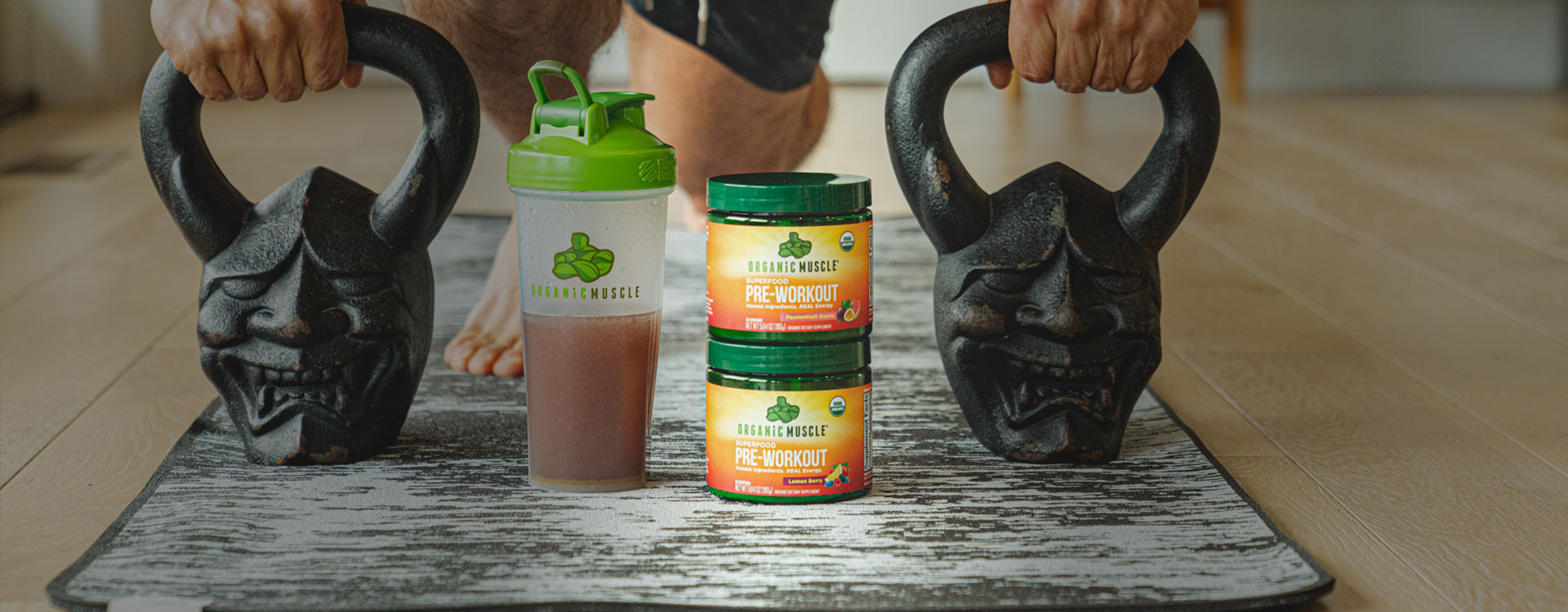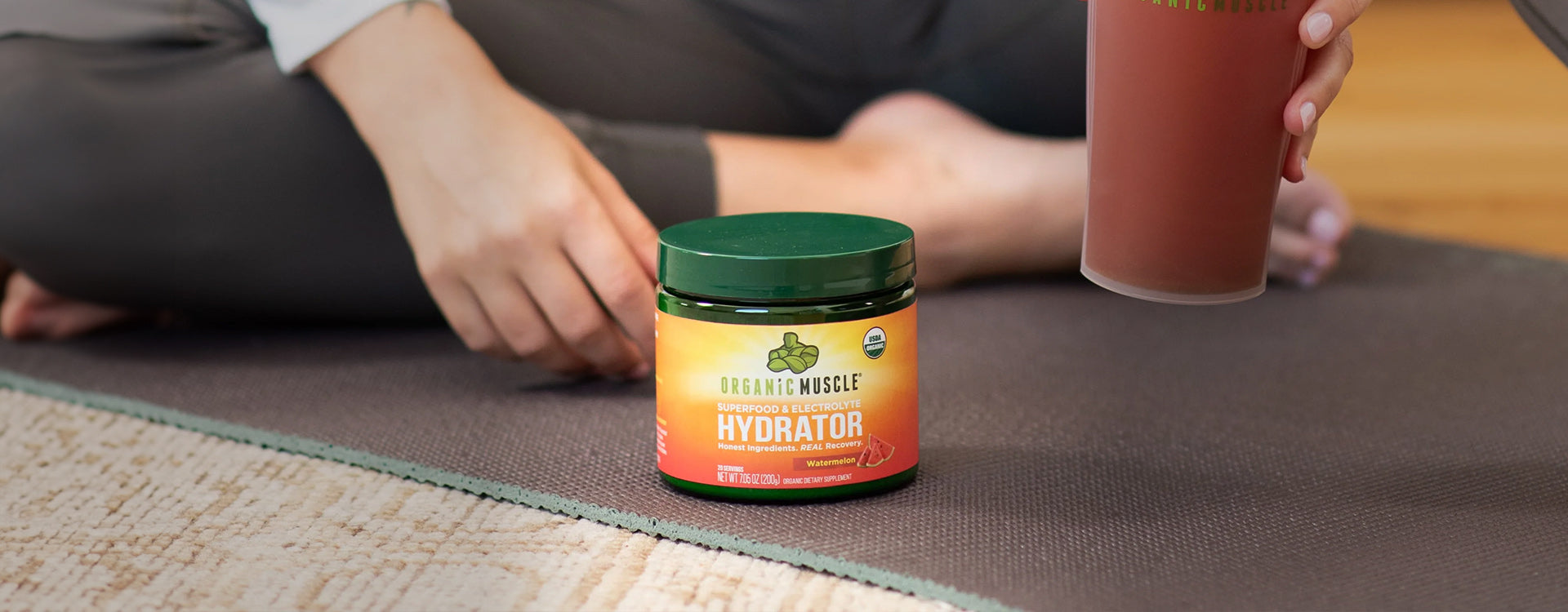Key Takeaways:
- Boost Athletic Performance: Strengthening your calves improves speed, power, and agility, which is crucial for any athlete or fitness enthusiast.
- Prevent Injuries: Strong calves enhance stability and reduce the risk of lower leg injuries, making them essential for high-impact sports.
- Maximize Calf Workouts: Incorporating exercises like standing and seated calf raises, jump rope, and box jumps ensures a comprehensive approach to building strength and stamina.
In the journey to peak physical fitness, the calves often emerge as one of the most challenging areas in which to build stamina and strength. However, they play a pivotal role in the overall athletic performance and aesthetic of the physique, providing foundational support for various activities and exercises. With the right calf workouts, one can sculpt and strengthen these crucial muscles and enhance their endurance, paving the way for a more balanced, powerful body.
This article is designed to guide you through the best calf workouts to build stamina and strength, ensuring you have the knowledge and techniques to reach your fitness goals. We aim to provide you with an informative, professional, and encouraging narrative that motivates and educates you on the importance of calf training.
Why Strong Calves Matter: Benefits For Athletes And Fitness Enthusiasts
Often overlooked in favor of larger muscle groups, calf muscles play a pivotal role in many physical activities, making them essential for seasoned athletes and fitness enthusiasts. Here are several benefits that underscore the significance of incorporating calf workouts into your fitness regimen.
Improved Athletic Performance
Strong calves are fundamental to explosive power, speed, and agility. They act as the springboards for movements such as sprinting, jumping, and pivoting, making them essential for virtually all sports, from basketball and soccer to track and field. Strengthening your calves directly invests in your athletic performance and competency.
Enhanced Stability and Balance
The calf muscles, comprised of the gastrocnemius and soleus, play a crucial role in stabilizing the ankle and foot during movement.1 Strengthening these muscles through targeted calf workouts enhances your body's ability to control and balance itself during dynamic movements and on uneven surfaces, reducing the likelihood of falls and injuries.
Injury Prevention
Robust calf muscles contribute significantly to preventing lower-leg injuries.2 They absorb shock and reduce the strain on other leg parts during high-impact activities. This is particularly important for athletes exposed to repetitive impacts, such as runners or basketball players, as it can lower the risk of shin splints, Achilles tendonitis, and other common conditions.
Increased Endurance and Stamina
Strong calves enable you to maintain a higher activity level for longer periods. This can mean better performance and faster times for endurance athletes, such as long-distance runners or cyclists. Even outside competitive sports, stronger calves can enhance your ability to engage in everyday activities without fatigue.
Aesthetic Appeal
Beyond the functional benefits, well-defined calves contribute to a balanced, muscular physique, rounding out the aesthetic appeal of strong legs. Whether the goal is to look good on the beach or to complement a bodybuilding routine, calf workouts can help achieve that sculpted appearance.
Top 5 Calf Workouts To Enhance Performance And Build Strength
Calf workouts are crucial for comprehensive fitness, affecting stamina, strength, and overall athletic performance. Let's explore the top 5 calf workouts designed to build strength and enhance performance, ensuring a holistic approach to your fitness journey.
Standing Calf Raises
This classic exercise targets the larger, more visible part of your calves, the gastrocnemius muscle. You can perform standing calf raises on a step or raised platform, allowing your heels to drop below your toes for an extended range of motion. For added intensity, use weights like dumbbells or a barbell.
Seated Calf Raises
Focusing on the soleus muscle, seated calf raises offer a variation to the standing calf raises. This exercise is performed sitting, with weights on your knees, enabling an isolated workout for the deeper calf muscles. It’s a crucial workout for endurance and stability.
Jump Rope
Jump roping is an excellent cardiovascular exercise and phenomenal for building calf strength and stamina. It engages the fast-twitch muscle fibers in your calves, promoting strength and resilience. Incorporate variations like single-leg jumps or double-unders to keep the routine challenging and effective.
Box Jumps
Box jumps are an explosive, plyometric exercise that builds power in the calves and improves overall lower-body strength. By jumping onto a raised platform and back down, you work your calves, quads, and glutes, enhancing your athletic performance and agility.
Calf Walks
Calf walks, known as farmers' walks on toes, improve balance, endurance, and strength. Walking on your toes, possibly while holding weights, mimics the calf’s natural movement, offering a dynamic workout that contributes to muscle build and stamina.
How To Incorporate Calf Exercises Into Your Fitness Routine
Incorporating calf workouts into your fitness regimen is essential for building stamina and strength. These pivotal muscles play a huge role in your overall leg performance and aesthetics, making their development not just about appearance but also about functional fitness and injury prevention. Here are effective steps to integrate calf exercises into your workout routine seamlessly
Start with a Warm-Up
Before starting any calf-specific exercise, begin with a 5—to 10-minute warm-up to get your blood flowing and muscles ready for the workout ahead. Activities like brisk walking or jogging can effectively prepare your calves and surrounding muscles.
Schedule Them on Lower Body Days
A strategic approach to adding calf workouts to your regimen is to perform them on your lower body training days. After you've worked on major muscle groups like the thighs and glutes, shift your focus to the calves. This ensures a well-rounded leg workout that integrates strength and endurance training efficiently.
Prioritize Form Over Weight
Regarding calf exercises, precision in form trumps the amount of weight used. The correct technique ensures maximum muscle engagement and reduces the risk of injury. Concentrating on the full range of motion, from a deep stretch to a full contraction, even if it means using lighter weights, is essential.
Experiment with Frequency and Volume
The calf muscles are accustomed to endurance-type activities from daily tasks like walking; thus, they might benefit from varying workout frequencies and volumes. Start by incorporating calf workouts twice weekly, gradually increasing the volume or frequency as your muscles adapt. It's important to listen to your body and provide ample recovery time to foster growth and prevent overuse injuries.
Incorporate Different Exercises
Diversifying the calf exercises in your routine can help target the muscles from various angles, promoting more balanced strength and development. Include a mix of standing and seated calf raises to engage the gastrocnemius and the soleus muscles. Exercises like calf press on the leg press machine or jump rope can enhance your routine's effectiveness.
Common Mistakes To Avoid When Training Your Calves
Here, we discuss some common pitfalls to avoid, ensuring your efforts yield the best outcomes, aligning perfectly with your fitness goals, and our commitment to holistic wellness.
Overlooking Warm-Up and Cool-Down Phases
A crucial yet often neglected facet of calf workouts is adequately preparing muscles before diving into intense exercises and allowing them to recover thereafter. Skipping warm-up exercises can lead to muscle strains, whereas neglecting cool-down sessions may cause stiffness. Incorporate dynamic stretches and light aerobic activity to prepare your calves, and opt for static stretching post-workout to aid in recovery and flexibility.
Ignoring Proper Form
The significance of maintaining correct form cannot be overstressed in the pursuit of building stamina and strength. Incorrect posture or technique not only diminishes the efficacy of the exercise but also heightens the risk of injury. Ensure you understand the mechanics of each workout and execute them with precision, focusing on quality over quantity to stimulate muscle growth and resilience effectively.
Neglecting Full Range of Motion
For calf exercises to be truly effective, they must engage the muscle through its full range of motion. Partial movements seem easier and allow more reps, but they shortchange the potential gains by not fully stretching or contracting the calf muscles. Aim for depth and extension in exercises like calf raises to ensure maximum muscle engagement and development.
Overtraining
While dedication to enhancing calf strength and stamina is commendable, there’s also a thin line between rigorous training and overtraining. Like any other muscle group, the calf muscles require time to recover and rebuild stronger fibers. Without rest, you risk plateauing or, worse, incurring injuries. Listen to your body and incorporate rest days, allowing your calves and your whole system to recover and thrive.
Beginner To Advanced: Calf Workouts For Every Fitness Level
Enhancing calf strength and stamina is a vital component of a holistic fitness approach, beneficial for athletic performances and daily life activities. Whether you're embarking on your fitness journey, looking to intensify your routine, or searching for advanced challenges, the following calf workouts are designed to cater to all levels, fostering development in both stamina and strength.
For Beginners: Foundation Building
- Seated Calf Raises: This workout is ideal for those starting their calf workout journey. It targets the soleus muscles, which play a crucial role in your lower leg. Begin with a lightweight to ensure proper form, and gradually increase the weight as your strength builds. Aim for 3 sets of 12-15 repetitions.
- Bodyweight Calf Raises: A simple yet effective exercise that can be performed anywhere. Stand with your feet shoulder-width apart, push through the balls of your feet, and raise your heel until you are standing on your toes. Slowly lower back down. This exercise targets the gastrocnemius and soleus muscles. Perform 3 sets of 15-20 repetitions.
Intermediate: Intensity Enhancement
- Single-Leg Calf Raises: By isolating each leg, you increase the workout intensity, fostering muscle growth and stamina. Use a wall or chair for support, lift one foot off the ground, and perform the calf raise with the other foot. Execute 3 sets of 12 reps per leg.
- Jump Rope: An excellent way to integrate cardio with calf strengthening. The constant bouncing on the balls of your feet enhances calf endurance and strength. Begin with short intervals of 30 seconds, building up to longer durations as your fitness improves.
Advanced: Maximizing Stamina and Strength
- Plyometric Jump Squat: This explosive move challenges your calves and engages your entire lower body and core. Start squat, explode upwards into a jump, and land softly. This advanced exercise enhances power, stamina, and calf muscle definition. Aim for 3 sets of 8-10 repetitions.
- Weighted Calf Jumps: Hold dumbbells by your side and perform quick, explosive calf jumps. The added weight significantly increases the workout's intensity, rapidly building strength and endurance in the calves. Proceed cautiously and opt for lighter weights, gradually increasing as you progress. Complete 3 sets of 10-12 jumps.
Calf Workout Equipment: What You Need For Maximum Gains
The right workout equipment can make all the difference when embarking on a journey to bolster your calf strength and stamina. Achieving maximum gains does not necessarily mean investing in expensive machinery; often, it's about utilizing the correct tools efficiently. Here are essential pieces of equipment and how they contribute to your calf workout success:
Resistance Bands
These versatile, lightweight bands are perfect for adding resistance to your calf workouts without needing heavy machinery. They're ideal for standing calf raises or seated stretches, targeting the muscles from different angles and intensifying the workout as your flexibility and strength improve.
Weighted Vest
Incorporating a weighted vest into your routine can significantly enhance the intensity of your calf workouts. Simple activities like walking, jogging, or performing calf raises while wearing a weighted vest can drastically improve muscle strength and endurance.
Dumbbells or Kettlebells
Handheld weights are excellent for adding an extra challenge to calf exercises. They can be used in various ways to supplement both standing and seated calf raises, increasing muscle engagement and promoting strength growth.
Step Platform or Box
A step platform or box is indispensable for boxing jumps or elevated calf raises. These movements intensely engage the calf muscles, improving both explosive power and muscular endurance.
Barbell with Plates
For those looking to advance their calf workouts seriously, a barbell loaded with weight plates allows for high-intensity training. Performing calf raises with a barbell can effectively isolate and build the calf muscles, paving the way for significant gains.
Press Machine
Though not mandatory for effective calf workouts, those with access to a gym can benefit from using a leg press machine. It enables varied workout intensities and angles, targeting the calves and enhancing strength and stamina.
Utilizing these tools in your calf workout routine will help you achieve your muscular strength and endurance goals and ensure that you are doing so safely and efficiently.
Final Thoughts
Strong calves are more than just an aesthetic feature—they are critical for enhancing athletic performance, improving stability, and preventing injuries. Whether you're a seasoned athlete or looking to boost everyday functional fitness, incorporating calf-specific workouts into your routine will provide numerous benefits. By focusing on form, variety, and proper recovery, you can unlock the potential of your calf muscles and experience improved strength, balance, and endurance.
As you embark on this journey to stronger calves, incorporating high-quality, natural supplements can provide the support your body needs to recover and grow. At Organic Muscle, our range of certified organic, non-GMO, vegan, gluten-free, keto-friendly, and dairy-free supplements are designed with your health and wellness in mind. Complementing your calf workouts with our supplements ensures your body receives the optimal nutrition required to perform at its best.
We encourage you to embrace these calf-strengthening exercises with patience and persistence. Remember, achieving meaningful results takes time, but with dedication and the right support from Organic Muscle, you're investing in a healthier, stronger version of yourself. Let us be part of your fitness journey, providing the safety and efficacy you deserve in every product. Together, let's conquer your health and fitness goals.
Read also:
- 10 Best Arm Workouts To Build Lean, Defined Muscles
- 10 Best Leg Workouts For Runners To Boost Endurance
- Best Glute Workouts For A Stronger, Rounder Booty
Frequently Asked Questions About The Best Calf Workouts To Build Stamina And Strength
Can I Build Calf Strength Without Weights?
Yes. While weights can accelerate the strengthening process, numerous bodyweight exercises effectively target the calves. Exercises such as calf raises, jump rope, and plyometric workouts like box jumps or squat jumps can stimulate muscle growth and increase strength and stamina in your calves without any weights.
Is It Better to Do High Reps or Heavy Weights for Calves?
The approach should be tailored to your fitness goals. High repetitions with lighter weights are beneficial for endurance and stamina. Conversely, lower repetitions with heavier weights are preferred to build muscle mass and strength. Integrating both methods into your routine can offer balanced calf development and performance benefits.
Are There Any Risks to Overworking My Calves?
Yes, like any muscle group, calves are prone to strain and overuse injuries if they are overworked. Symptoms of overworking include prolonged soreness, decreased performance, or more serious injuries, such as calf strains. To avoid this, ensure adequate rest, vary your workouts, and listen to your body’s cues for recovery.
How Can I Ensure I'm Targeting All Parts of My Calves During a Workout?
To effectively target all areas of your calves, incorporate various exercises into your routine. Standing calf raises emphasize the gastrocnemius muscle, while seated calf raises focus on the soleus muscle. Including both types of exercises ensures comprehensive calf development.
How Can I Measure Progress in Calf Strength and Stamina?
Progress can be gauged through several methods: increased weight or resistance, higher repetition numbers, or improved performance in activities requiring calf strength and endurance. Additionally, periodically measuring the circumference of your calves can provide physical evidence of muscle growth.
How Can I Prevent Injury When Doing Calf-Focused Exercises?
Proper technique and gradual intensity increases are essential to preventing injury during calf exercises. Warm up thoroughly before workouts and cool down afterward to ensure muscle flexibility. Pay attention to discomfort and avoid pushing through pain, as this could indicate potential injury. Consult with fitness professionals if unsure about techniques or progression.
Sources:
- Bordoni, B., Waheed, A., & Varacallo, M. (2019, May 10). Anatomy, Bony Pelvis and Lower Limb, Gastrocnemius Muscle. Nih.gov; StatPearls Publishing. https://www.ncbi.nlm.nih.gov/books/NBK532946/
- https://www.thephysiomovement.com.au/the-4-best-calf-strengthening-exercises-to-prevent-injury/#:~:text=Why%20Is%20Calf%20Strength%20So,simply%20going%20about%20your%20day.
|
Disclaimer: Organic Muscle products are not intended to treat, diagnose, mitigate, prevent, or cure disease. Organic Muscle products should not replace prescribed medications or the variety of foods important to a healthful diet. |













